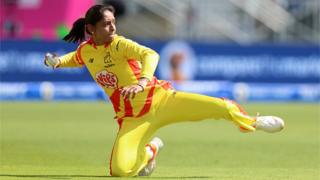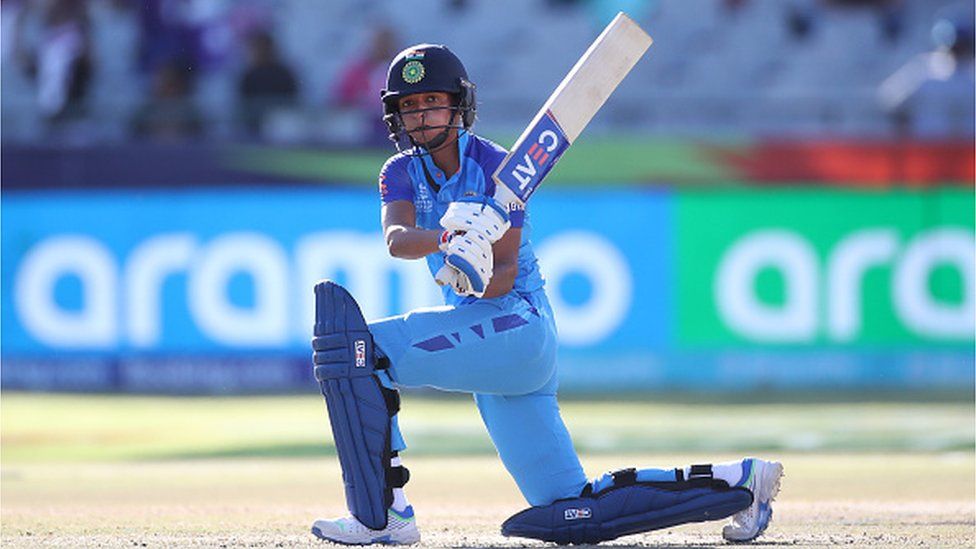
If you’ve heard of Harmanpreet Kaur, it’s likely you’re familiar with her epochal 171 not-out in India’s unlikely win in the 2017 ODI World Cup semi-final against Australia.
Or that she is the captain of the Indian women’s cricket team, the first and only woman to hit a T20 century for India and the first cricketer from the country to get a contract in an overseas franchise-league.
Impressive as the legacy is, Kaur, 34, has added a raft of firsts to her name in 2023 alone – the 15th year of her international career.
In February, she became the first cricketer to play 150 T20s and the first captain to lift the Women’s Premier League title the following month. Later in the year, she co-captained India to their first-ever Asian Games gold medal in cricket alongside Smriti Mandhana.
Wider recognition followed as Wisden named her one of its five cricketers of the year, a first for an Indian woman; BBC’s 100 influential women of the year line-up featured her, as did TIME magazine on its 100 Next list.
The burgeoning bouquet of accolades is a reflection of Kaur’s peak influence in her field. It also coincides with a time the women’s game continues to break new ground in cricket-obsessed India and beyond.
“She’s an unbelievably talented cricketer and has showcased that for an extended period of time,” Australia captain Alyssa Healy said. The two sides recently met for a test match in the financial city of Mumbai, which India won by eight wickets.
“But what she has done in leading this Indian side, and almost this new generation of Indian women cricket into the modern game, has been really amazing to watch.”
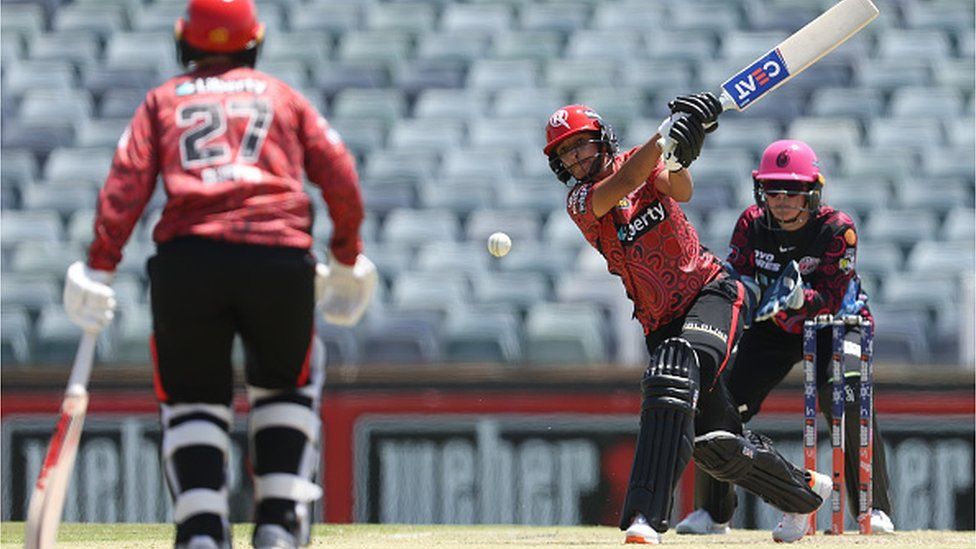
One of the small-town success stories of Indian cricket, Kaur hails from Moga, long dubbed the “drug capital” of Punjab. The oldest of three siblings, she was born into a Sikh family of meagre economic means and first played cricket with a hockey stick, with boys at a ground in her neighbourhood.
It was only after a teenaged Kaur first met her mentor, Kamaldheesh Singh Sodhi – a regular visitor at the ground – between 2006 and 2007, that her life was set on the cricketing track in earnest.
“She was a natural athlete whose potential found direction under my father,” Sodhi’s son, Yadwinder, also Kaur’s first coach, told the BBC. “Her fearless temper and genuine love for cricket has underpinned her appetite for getting better at the game, learning to hit those big sixes…and look how far it has brought her.”
A pivotal force in the surging popularity of women’s cricket in India, Kaur, alongside her vice-captain Smriti Mandhana, continues to elevate her status as a trailblazer in the country’s women’s sports.
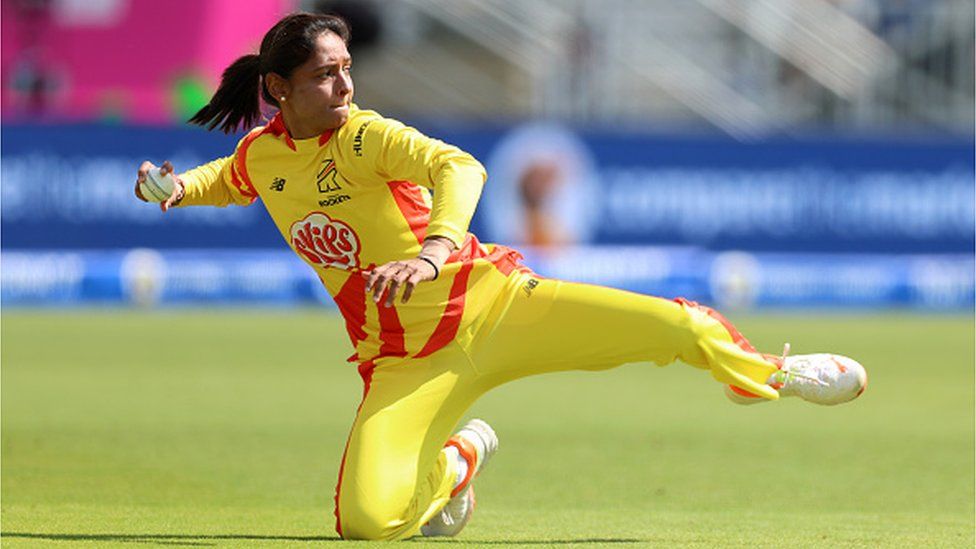
“Every era has two or three such figures, and Harman has been in the driver’s seat for a few years now, especially since getting the captaincy in T20s [in 2016],” said former India captain Anjum Chopra.
“Stepping into full-time leadership across formats after the retirement of the legendary Mithali Raj last year has significantly elevated her standing.”
With over 6,500 runs in 290 international appearances, Kaur has led India to uncharted territories both at home and abroad.
In 2020, she guided them to their first T20 World Cup final, secured their inaugural ODI series win in England in almost 23 years during the summer multi-format tour, and won silver at the Commonwealth Games’ inaugural women’s cricket competition just weeks before.
“The most important thing that I remember about working with Harman was the way she was always looking to do things for the team,” former India head coach WV Raman said. “Her personal form wasn’t the best, and the harder she tried, the worse it got. But she was calm, receptive and quick to implement any feedback about her batting for the sake of the team.”
Kaur’s limited-overs prowess remains the cornerstone of her cricketing clout. But in December, she made good on a rare Test-playing opportunity, too.
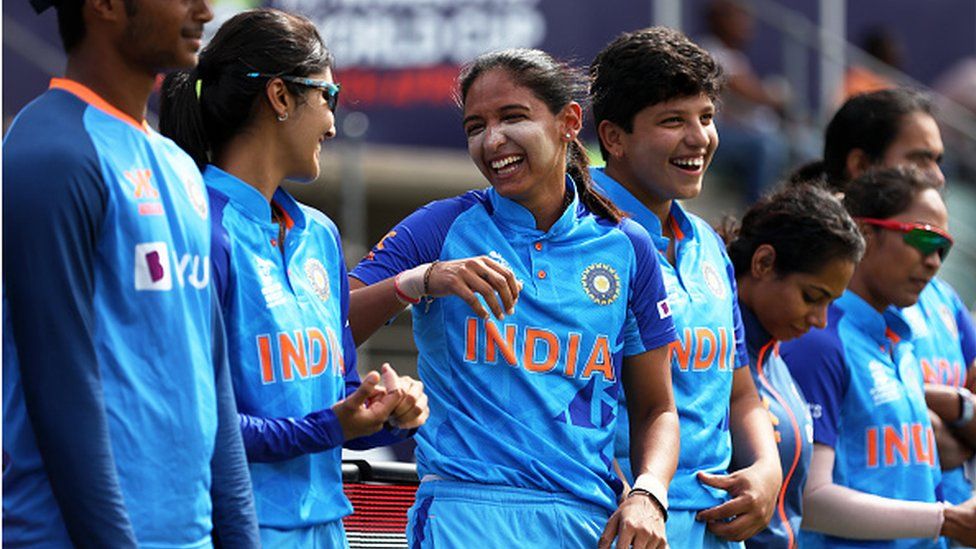
On Test captaincy debut, she deployed refreshingly attacking ploys from the start and scored 49 and 44 not-out in India’s record 347-run victory against England in Navi Mumbai, the highest margin in women’s cricket ever. Over the weekend, she made history as the first captain to lead India Women to a Test victory against Australia in Mumbai
Ahead of the England Test, India’s first women’s Test on home soil in nearly a decade and Kaur’s fifth overall in the longest format, she made her view on personal milestones clear.
“I want this team to grow in a way that everyone says that this is the best team,” she said. “For me winning a World Cup is a dream … I don’t count my personal achievements to any level because I’m playing a team sport. If the team is doing well I’m happy.
“At the same time, when you’re not feeling great, you see people telling you, ‘You’ve done this and that,’ to make you feel good.”
One of the most belligerent batters in modern cricket, paradox underlines Kaur’s playing style as it does her personality. Poise and power define her batting, affable reticence her private demeanour, and the occasional inability to read the room her chequered time at office.
Issues concerning on-field conduct have dotted her career. In June, the latest incident, where Kaur smashed her stumps and criticised umpires during an ODI against hosts Bangladesh, resulted in a two-match ban imposed by the International Cricket Council (ICC).
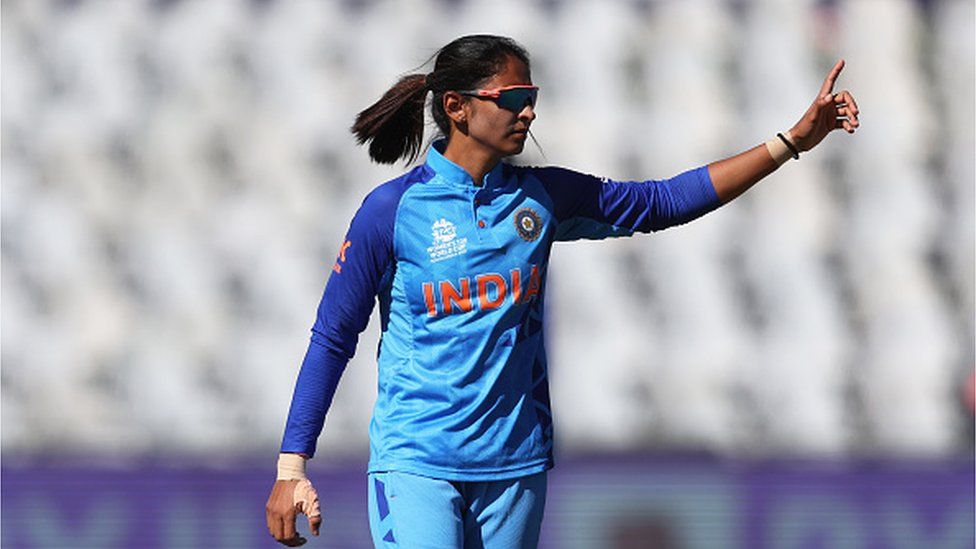
“You can be angry if you don’t feel a decision was right, but you can’t have an outburst in front of the world,” Chopra said. “That said, as an athlete, if you trade the natural instincts that make you human and genuine for a picture-perfect, plastic personality, you cease to be relatable.”
Both Chopra and Raman believe the next three years or so might be Kaur’s best, and most consistent, yet.
“That’s because she’s gradually understanding herself better and is also aware of her cricket a lot more,” Raman said. “Plus, she knows that she’s got a bunch of cricketers who relate to the fact that she’s all for the development of the team and the individuals.”
The ingredients are in place for Kaur to leave an unrivalled legacy. If the stars align, it could be marked by India’s first senior women’s World Cup win, in the T20 edition in Bangladesh next year, at home in the ODI edition in 2025, or both.
BBC News India is now on YouTube. Click here to subscribe and watch our documentaries, explainers and features.

Read more India stories from the BBC:


